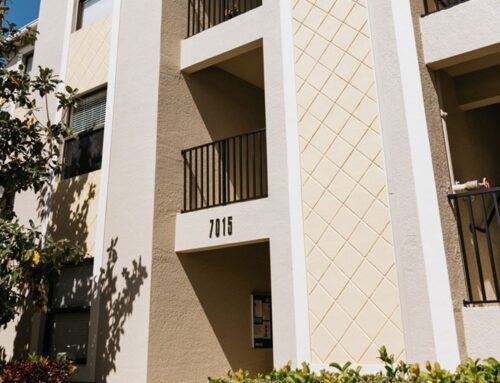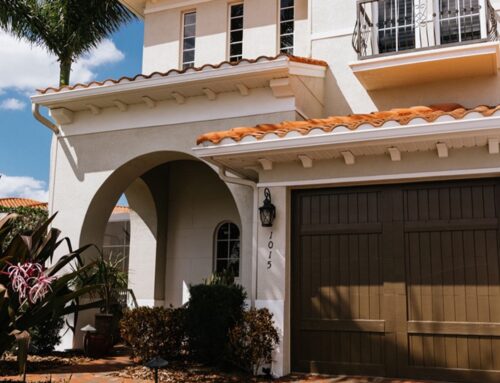Is paint preparation as vital as painting itself? Absolutely. For homeowners aiming to invest in a quality finish, understanding the role of prep work can transform an ordinary painting project into an exceptional one. Proper preparation ensures paint adhesion, smoother application, and robust longevity, sparing you from peeling or unsightly blemishes that can tarnish the appearance short-term. Surface readiness involves more than a simple clean; it includes repairing imperfections, sanding, and priming to create an ideal canvas. In Florida’s vibrant climate, where humidity and temperature fluctuations impact surfaces, meticulous prep work becomes indispensable. Consider it the foundation for your paint’s success—a crucial component that supports the visual aesthetics and practical durability of your home. If you’ve ever wondered why experienced painters prioritize preparation, this guide offers insights that could redefine how you view your next painting project.
The Science Behind Paint Adhesion
Understanding the science behind paint adhesion can greatly improve the outcome of your painting projects, whether residential or commercial. At its core, paint adhesion is all about how well paint sticks to a surface. For paint to adhere properly, a few fundamental factors must be considered, such as the type of surface, the paint formula, and environmental conditions during application.
Firstly, the surface to be painted needs to be clean and dry. Dirt, grease, or moisture can create barriers that disrupt the bond. A clean surface allows the paint to interact effectively, enhancing adhesion. Sanding the surface can also help by creating a rougher texture. This texture provides more surface area, allowing the paint to grip better. Specifically for glossy surfaces, light sanding can prevent peeling by ensuring the paint has a matte surface to adhere to.
The chemical composition of paint also plays a role. Paint is made of pigments, solvents, binders, and additives. Binders, such as acrylics, epoxies, or urethanes, are crucial as they determine the paint’s adherence to the surface. High-quality binders improve paint longevity and adhesion. When selecting paint, take note of the binder type suitable for your project. For instance, latex paint is water-based and works well on surfaces prone to expanding and contracting, while oil-based paint offers a smoother finish and is better for surfaces exposed to heavy use.
Environmental factors like temperature and humidity impact paint adhesion. Ideally, paint in moderate temperatures, typically between 50°F and 85°F, with low humidity. High humidity slows drying and can cause defects. Low temperatures can make paint too thick, affecting its spread and bond.
Every surface and environment is unique, so testing paint adherence on a small area before full application can save time and resources. By understanding these underlying principles, you can ensure your paint not only looks good upon application but endures over time.
Steps for Proper Surface Cleaning
To achieve a long-lasting paint job, proper surface cleaning is key. Whether you’re updating your business or refreshing residential spaces, a clean surface is critical for strong paint adhesion. Without this essential step, even the highest quality paint could lead to peeling and flaking.
Start with a thorough inspection of the surface. Identify areas with visible dirt or stains, as they will need extra attention. For exterior walls, consider pressure washing. This can efficiently remove layers of dirt and mildew, especially on brick or stucco. For interiors, a damp cloth or sponge with mild detergent can tackle dust and small marks on walls.
For kitchen and bathroom areas, grease can be a challenge. Use a degreaser or a vinegar-water solution to break down these residues. Apply the solution with a sponge or cloth, ensuring you don’t leave streaks. Rinse well and let it dry completely to avoid paint issues later.
Scraping is crucial for surfaces with peeling paint. Use a paint scraper or putty knife to remove loose or chipping paint. Focus on areas where the finish appears lifted. Sand the edges of the scraped sections to smooth transitions between bare and painted areas. This ensures an even application of the new paint.
Mold and mildew are persistent concerns, especially in humid climates like Florida. Use a mix of one part bleach to three parts water for tackling these spots. Apply the solution carefully with a brush or sponge, and use protective gloves and goggles. Rinse thoroughly and let the surface dry before painting.
Priming the surface is the final step after cleaning. Choose the right primer for your wall type. Primers seal the surface, providing a uniform base and improving paint adhesion. They also help cover any remaining imperfections for a consistent top coat. This step is vital, especially if drastic color changes are planned, or if you’re painting over bare wood or metal.
By incorporating these meticulous cleaning steps, you can greatly improve the durability and appearance of your painting projects, making it a beneficial investment in enhancing your space’s aesthetic and structural integrity.
How to Use Primers Effectively
When preparing surfaces for a fresh coat of paint, understanding the effective use of primers can drastically enhance the final result. Primers play a crucial role in achieving a smooth, long-lasting finish. So, what’s the key to using primers effectively?
First, know the surface you’re dealing with. Different surfaces require different primers. For drywall, use a latex primer. It seals the porous surface and creates a smooth texture, which helps the paint adhere better. On the other hand, oil-based primers are suited for wood, as they prevent tannin from bleeding through the paint, which can cause discoloration. For surfaces that have been previously painted with glossy paint, a bonding primer ensures the new paint sticks properly.
Before applying primer, ensure the surface is clean and dry. Dirt, grease, or moisture can hinder the primer’s ability to bond, which may lead to peeling or uneven coverage. Use a mild detergent to clean; rinse thoroughly and allow the surface to dry completely.
Applying the primer evenly is vital. Use a quality brush or roller suited to the surface texture if painting by hand. For large or complicated areas, consider using a sprayer for even coverage. Apply the primer using consistent strokes; pay attention to overlaps to avoid thick sections that may lead to visible streaks or clumps in the finished paint.
Allow adequate drying time as per the manufacturer’s instructions. Rushing this step can compromise the final layer’s adherence. Applying paint to a wet primer can lead to peeling and cracking. If the surface requires extra sealing due to stains or dark colors, a second coat of primer might be necessary.
Finally, consider the environment. Humidity and temperature can impact drying time and adherence. Ideal conditions are around 50% humidity and temperatures between 50°F and 85°F. Adjust drying times accordingly to ensure the primer performs as expected. With these insights, you can ensure the primer does its job, leading to a polished, professional finish every time.
Next Steps
In understanding why preparation is as crucial as painting itself, it becomes evident that achieving a pristine, durable finish requires more than simply applying a fresh coat. Proper preparation—comprising surface inspection, cleaning, repair, and priming—lays the groundwork for successful paint adhesion and longevity, particularly in Florida’s dynamic climate. As homeowners, appreciating these preparatory steps transforms your understanding of painting, aligning with a vision that goes beyond aesthetics to include durability and resilience against environmental challenges.
At A Step Above Painting, we believe that the beauty of a well-executed painting project begins long before the first brushstroke. Our experienced team is equipped to handle the complexities of surface preparation, ensuring your residential or commercial spaces benefit from a superior, lasting finish. If you’re planning to enhance your property, let our experts guide you through the process. Reach out today for a free quote or consultation. Discover how meticulous preparation can elevate your next painting project from ordinary to exceptional.





